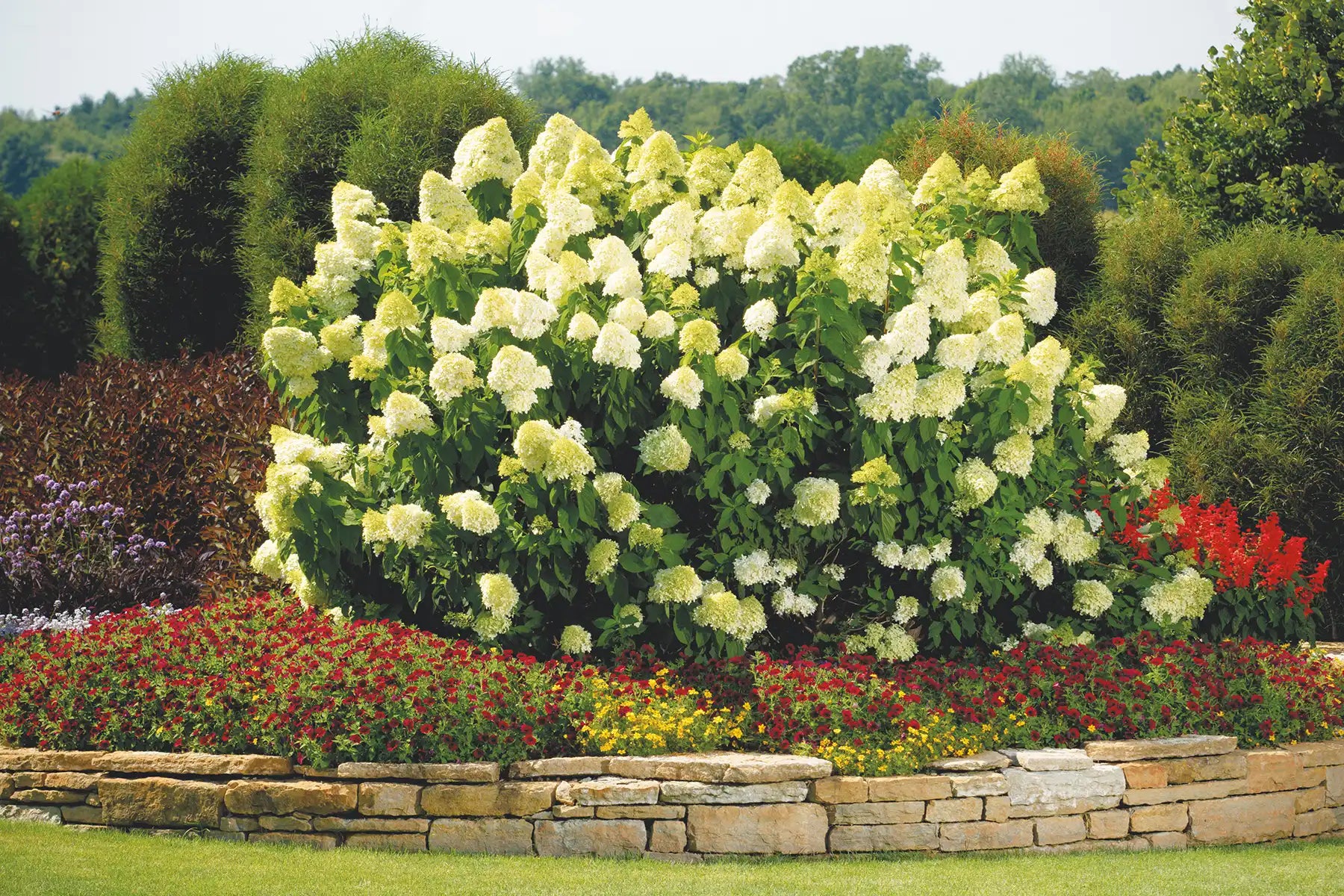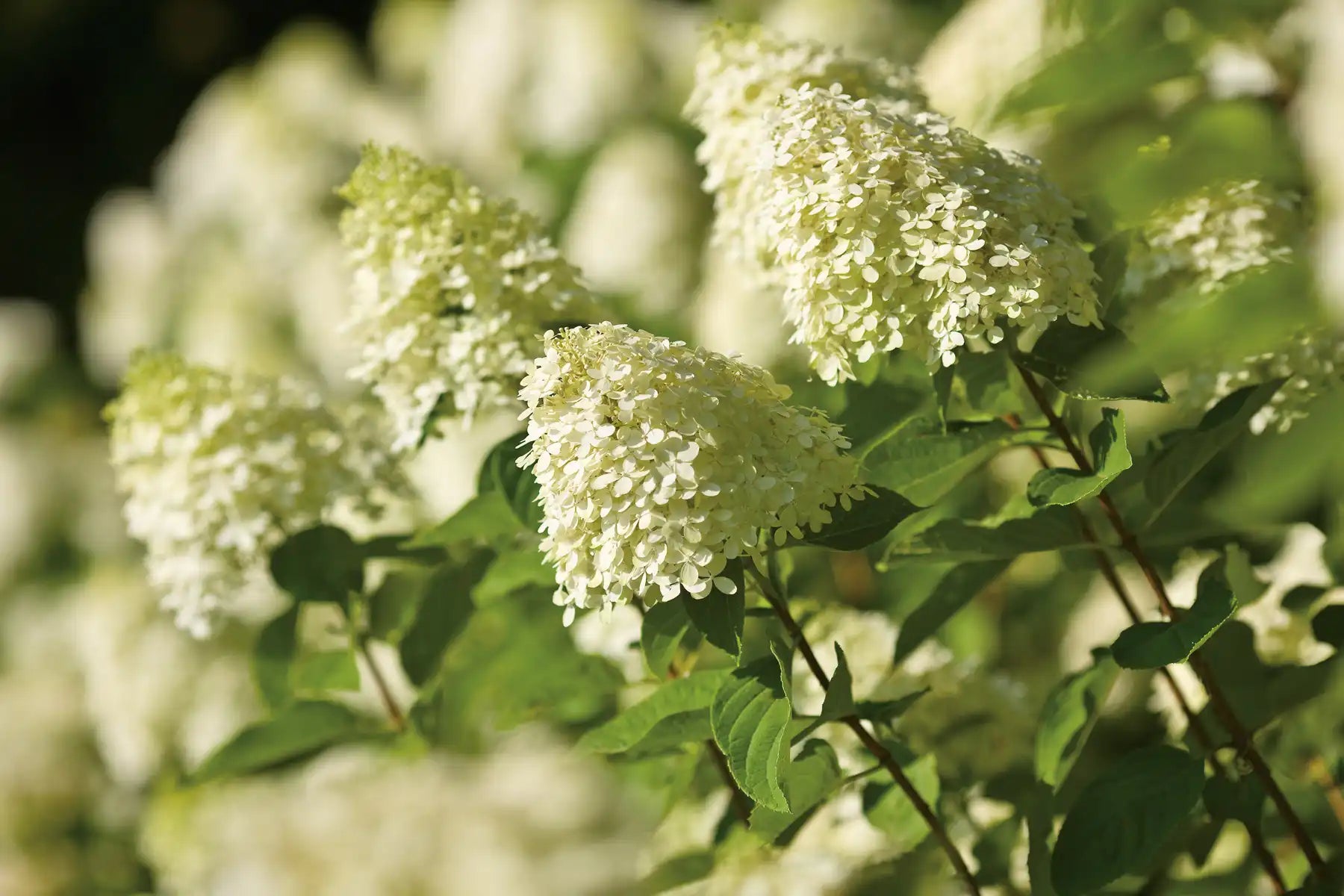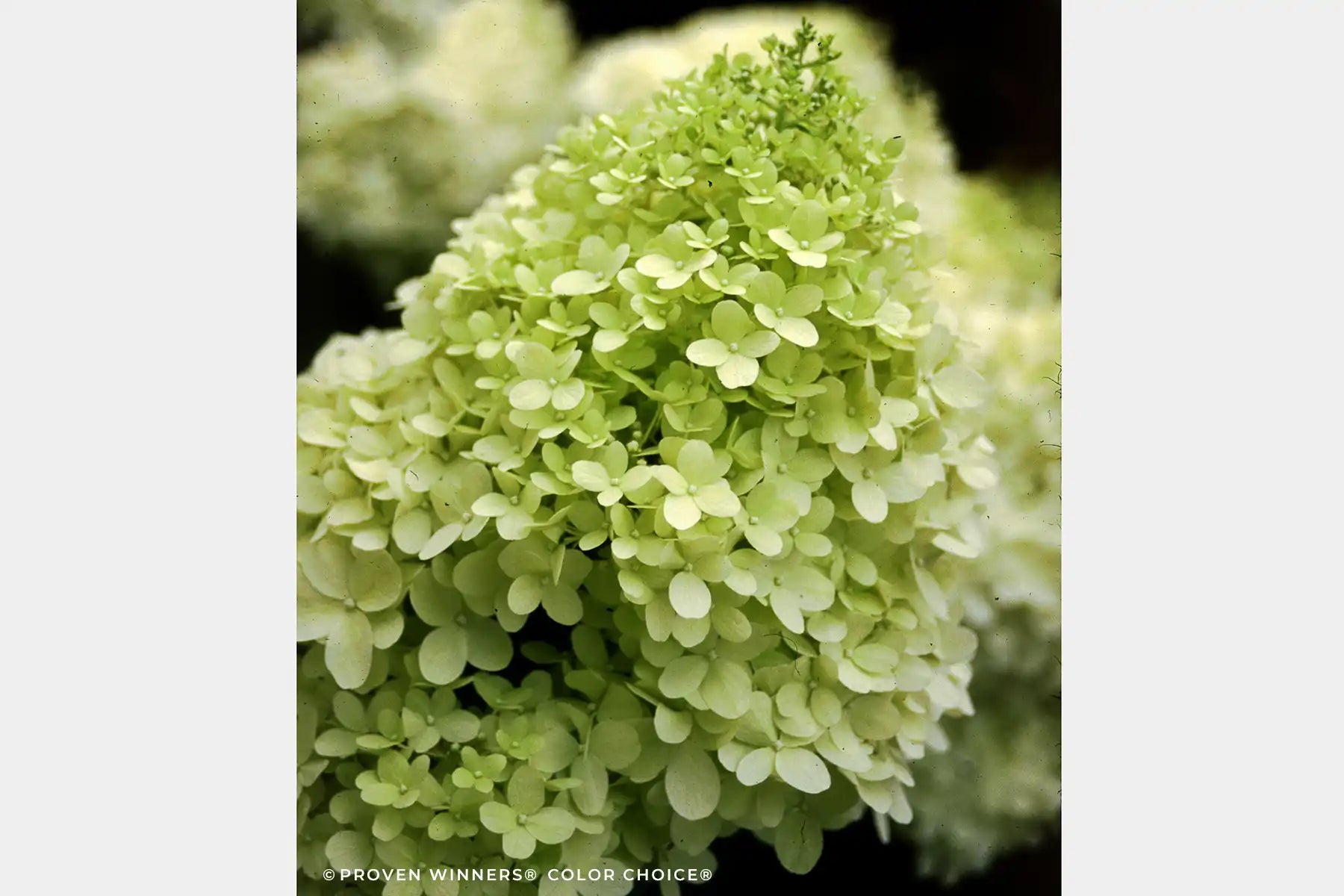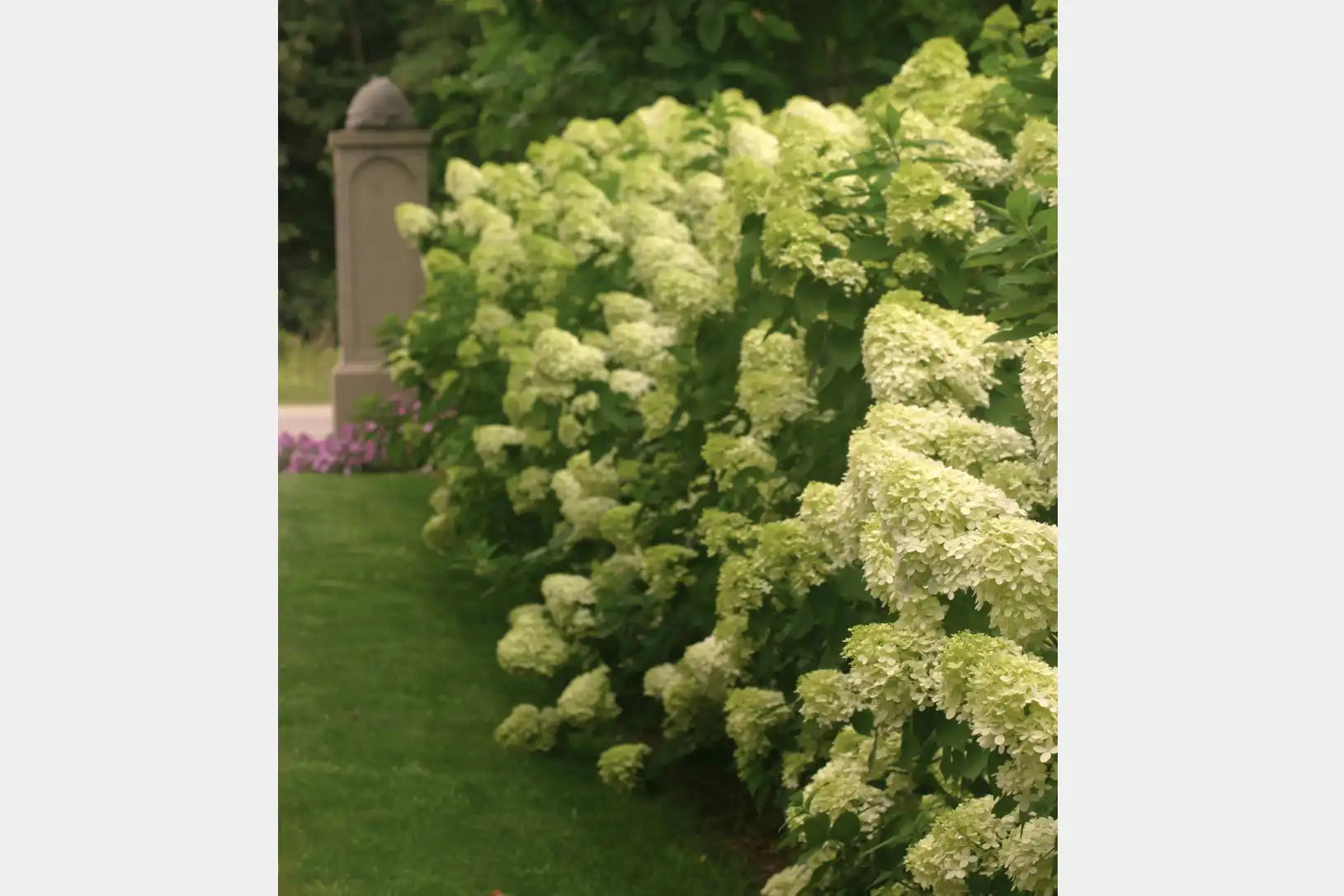



Let’s Grow
About Limelight® Panicle Hydrangea
A staple plant in cooler climates, Limelight hydrangeas bloom later in the season than many other hydrangea types and they will keep your garden lush with flowers well into autumn. While these plants are incredibly cold hardy and can grow in zones 3, they are adaptable enough for warmer climates as well. While Limelight hydrangeas are mostly kept for their showy, pyramidal blooms, their leaves turn a vivid shade of red in fall for even more end-of-the-season color!
Like other panicle hydrangeas, Limelight flowers don’t change color due to soil pH, but they do shift shades. When flowers first emerge, they are a bright, creamy white tone, which turns into a chartreuse green later in the season. As flowers age in autumn, they fade into a pale pink color that complements the plant’s red leaves beautifully. Limelight flowers also preserve exceptionally well in fresh or dried floral displays.
|
Limelight® Hydrangea |
|
|
Botanical Name |
Hydrangea paniculata |
|
Plant Hardiness |
Zone 3-9 |
|
Mature Height |
6 to 8' |
|
Mature Width |
6 to 8' |
|
Sun Needs |
Full Sun, Partial Shade |
|
Does Not Ship To |
AK, AZ, CA, HI, ID, MT, NV, OR, UT, WA, PR |
|
|
|
When fully mature, Limelight® hydrangeas grow to about 6’ tall and it can provide excellent, seasonal garden privacy when kept as a hedge. These shrubs also make lovely specimen plants and they can be used as backdrop plants to highlight lower growing perennials and annuals in ornamental beds.
Special features:
- Late season blooms
- Cold weather resistant
- Salt tolerant
- Provides seasonal privacy
- Good for cut flowers
How to care for hydrangeas
Limelight hydrangeas are not difficult to keep as long as you provide them with the recommended hydrangea growing conditions. If you’re new to keeping hydrangeas, check out the tips below to learn how to take care of hydrangeas and keep your plants happy and thriving for many years to come!
When to plant hydrangeas
Shrubs, including hydrangeas, should be planted in spring or autumn whenever possible. Planting at this time will reduce planting stress and it will give your plants more time to settle into your garden before the extreme temperatures of summer and winter. You can also plant hydrangeas in summer, but they will need more frequent watering.
Where to plant hydrangeas
Limelight hydrangeas are not particularly drought tolerant and they will grow best in rich, well-draining soil that is kept moist. While they do love water, they shouldn’t be grown in soggy beds, which can produce root rot. If possible, consider amending your garden with a bit of compost prior to planting as this will encourage your hydrangeas to grow faster and produce more flowers.
Limelight hydrangeas can be grown in full sun or part shade. In hot climates, locating them in an area that receives some afternoon shade is recommended as the extra shelter will prevent heat stress and wilted leaves. They can be grown in containers as an attention-getting accent.
How to plant a hydrangeas in the ground
When you’re ready to plant your Limelight hydrangeas, dig a hole that is as deep as your nursery pot and 2 to 3 times as wide. Slip your plant’s root ball into the hole and then backfill it with soil. Water your plant in well and then water often to maintain a consistent moisture level. You can also spread 2 to 3” of mulch around the base of your plant if you’d like to reduce water loss and limit weeds.
Limelight hydrangeas should be given a few years to settle in but then they will benefit from an annual pruning in late winter. Remove old and dead branches and thin out stems to improve the look of your plant, cutting back the remaining stems so they are about 12 to 18” long. The more stems you leave on your plant, the more flowers you’ll get. However, if you cut away more stems, you’ll get larger blooms.
How big do hydrangeas get
Limelight hydrangeas grow quite large and they can reach about 6 to 8’ tall and wide. Plants can be kept smaller with pruning, but if they are allowed to grow naturally they will form an effective, seasonal privacy screen.
History of Limelight® Panicle Hydrangea
Hydrangeas naturally come from Asia and the Americas, but panicle hydrangeas are native to Japan and China. Wild panicle hydrangeas are not very showy, but they still caught the eye of 19th century botanists.
In the 1870s, one unique variety of panicle hydrangea was brought to the Americas and Europe. This plant eventually became known as the Hydrangea paniculata ‘Grandiflora’. From this first specimen, many hydrangea varieties were developed, including Limelight hydrangeas.
Specially grown for its colorful blooms and hardy nature, Limelight was first released in the United States in 2002.
Buying Limelight® Panicle Hydrangeas at Cold Creek Nurseries
Whether you plant just one Limelight or a whole hedgerow of these fantastic plants, you can order your Limelight hydrangeas from us and have them shipped right to your door. Our plants are all carefully packaged in sturdy nursery containers and they are all produced from stem cuttings to preserve the unique look of the original plant. Once your Limelight hydrangeas arrive, all you need to do is start planting!
Choose options





